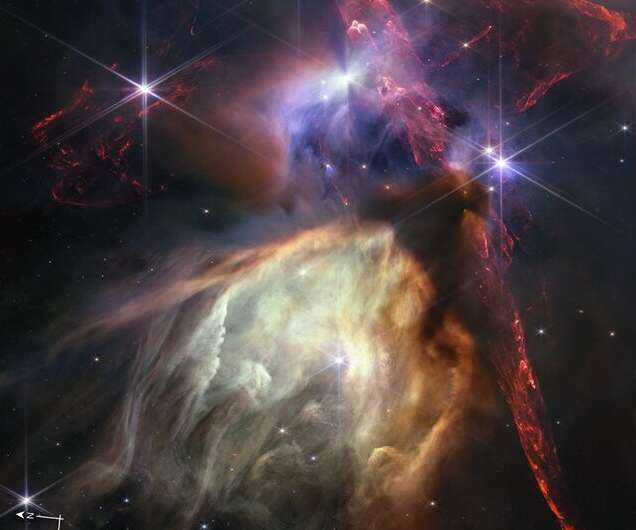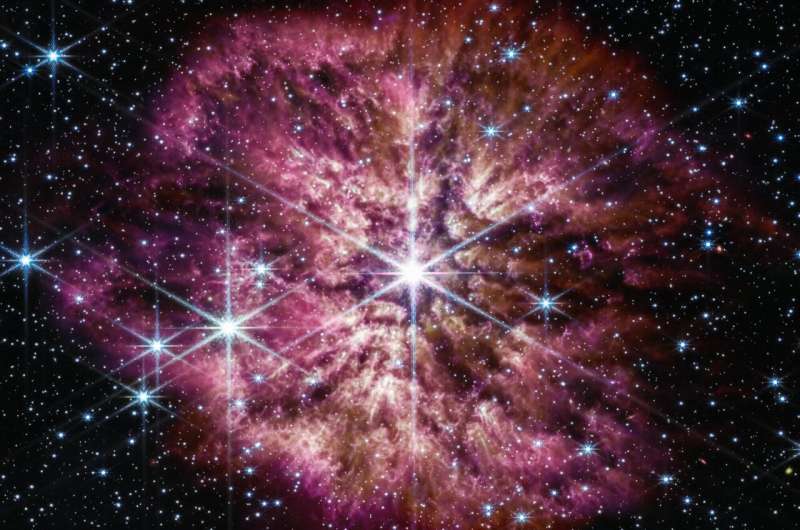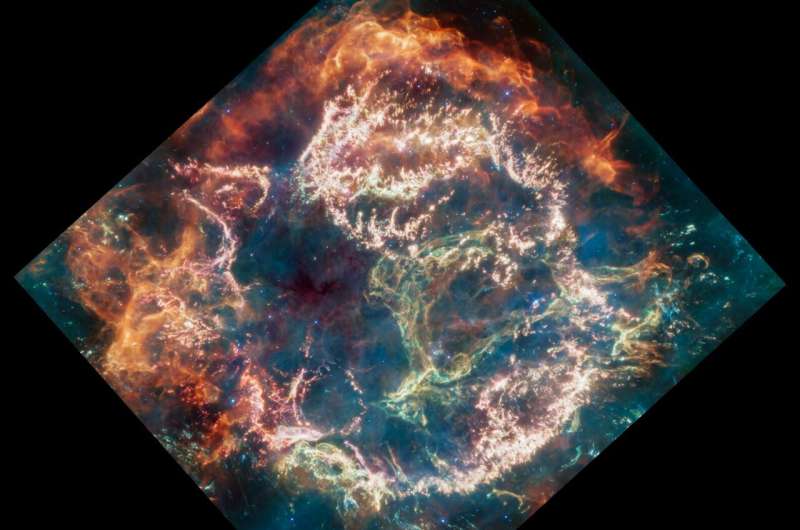The James Webb Space Telescope continues to astound us with breathtaking images that reveal the life cycle of massive stars. Astronomer Nienke van der Marel provides insights into three captivating images that depict the short yet explosive lives of these celestial giants.
The Serpent Bearer: A Nursery of Stars
The first image showcases Ophiuchus, also known as the Serpent Bearer. "This star-forming region is a few million years old," explains Van der Marel. "These stars are still growing, and planets are forming around them. A major part of my research focuses on this region."
The image's vibrant colors are a result of the telescope's different filters, each sensitive to a different type of material emitting a unique kind of light. The red jets visible in the image are hot hydrogen, a byproduct of star formation. The white dots of light are young stars still in their formative stages.
The large arch in the image is the outermost part of a cavity created by a young massive star, S1, which is more than 20 times more massive than our sun. The energy released by such stars heats the surrounding material to extreme temperatures, causing chemical reactions and creating a cavity with a yellow rim of tiny dust particles.
Wolf-Rayet 124: A Star Nearing its End
The second image features a Wolf-Rayet star, a massive star that has consumed most of its hydrogen and lost its atmosphere. "At more than 20 times the mass of our sun, it is an enormous star. And it is a million times brighter," says Van der Marel. This star will explode in a few hundred thousand years, a short lifetime on an astronomical timescale.
Surrounding the star is a cloud of pink, brown, and purple dust, blown away from the star's surface. This image will help us understand how these massive stars enrich heavier elements and dust particles, the building blocks for planets and life.
Cassiopeia: The Aftermath of a Supernova
The third image shows what remains of a massive star after it explodes. "After a supernova has occurred, a cloud remains that is still visible for thousands of years," explains Van der Marel. The orange and red material is hydrogen from interstellar matter that was pushed away when the star exploded. The lighter, pink material is probably the remnant of the star itself, representing the elements and atoms that were created in the star.
In the middle of the image, we can see a green loop, nicknamed the 'green monster.' Its presence was unexpected and has never been observed before in the remnants of a supernova. This discovery highlights the exciting unpredictability of astronomy, as researchers often find something completely unexpected while studying something else.
The James Webb Space Telescope continues to provide invaluable insights into the life cycle of stars, contributing to our understanding of the universe and our place within it.






0 Comments